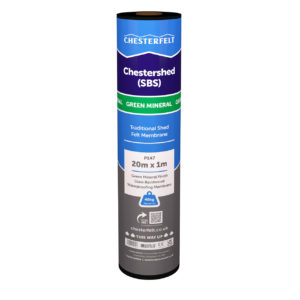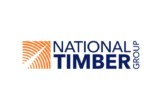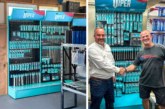
As the roofing industry continues to focus on safety and quality, Mike Vaczi, Technical Director at Chesterfelt, explores what merchants need to know about best practice for the selection, preparation and installation of bituminous roofing membranes.
Bituminous membranes combine waterproofing performance with simple installation and excellent durability. However, these benefits can only materialise when the installation process is executed properly.
To this end, understanding these systems as ‘integrated assemblies’ rather than individual components is crucial. For merchants, this means being able to advise customers on how different elements work together, from substrate preparation through to final weatherproofing. Master this knowledge, and it could become a key differentiator when customers need guidance that goes beyond the basic product specs.
Pre-installation: the foundational principles
The success of any bituminous roofing system begins long before the first membrane is laid. Substrate preparation is the critical foundation that determines system longevity. Merchants should emphasise to customers the importance of getting this right, as rushing this stage to save time invariably leads to problems later in the project lifecycle.
The condition of the substrate directly influences membrane adhesion and overall system integrity. Any contamination, moisture or structural irregularities can compromise the entire installation. This makes it vital to ensure surfaces are completely dry and free from debris, dust or any substances that might prevent proper bonding.
“For merchants, this means being able to advise customers on how different elements work together, from substrate preparation through to final weatherproofing.”
Temperature considerations are equally important, as applying membranes outside recommended temperature ranges can affect material properties and bonding characteristics.
The installation sequence demands careful planning to maintain weathertightness throughout the construction phase. Merchants should advise customers to plan work in manageable sections that can be completed and sealed within a single working day. This will prevent water ingress during construction while allowing the flexibility to respond to changing weather conditions.
Priming requirements will vary depending on substrate type and membrane specification. While some substrates like plywood or OSB may not require priming, most concrete, metal or masonry surfaces benefit from appropriate primer application. The primer must be fully cured before membrane installation — this requires factoring drying time into project schedules.
Managing the critical details during installation
Air and vapour control layer installation demands particular attention as this component often determines how the overall system performs. The positioning and sealing of the AVCL affects both thermal efficiency and moisture management within the roof build-up.
Merchants can advise customers that this layer needs to provide continuous coverage with properly sealed joints to prevent air leakage and vapour transmission.
Meanwhile, deciding what mechanical fixings and adhesives to use will depend on the substrate type, exposure conditions and design wind loads. Torch application remains popular for its reliability, but this requires trained operatives and strict adherence to safety protocols. Cold adhesive systems offer advantages in certain situations, particularly where hot work restrictions apply or fire risk management is critical.
Insulation placement and fixing must also account for thermal bridging, wind uplift resistance and traffic loads. Board layout should minimise thermal bridging through careful joint design and staggered installation patterns. The interface between insulation and membrane layers requires attention to ensure no gaps or discontinuities that could compromise thermal performance.
Equally critical are the membrane joints themselves, where overlap widths, sealing techniques, and edge details must follow manufacturer specifications precisely.
All of these critical details become meaningless if moisture penetrates the system during installation. Even brief exposure to moisture can compromise system integrity — here, merchants can help customers with weather protection planning, including provisions for emergency weatherproofing if conditions deteriorate unexpectedly.
Quality assurance and long-term performance
Getting the installation details right is only half the battle — maintaining consistent standards throughout the project will mean these efforts translate into lasting performance.
Indeed, no matter what methods and processes are adopted, quality control measures should be implemented throughout the installation process. Rather than relying on a final inspection alone, regular monitoring allows for early identification and correction of issues before they become systemic problems.

Tool selection and maintenance also impacts standards. Professional-grade equipment designed for membrane installation delivers better results than improvised alternatives. Meanwhile, regular equipment maintenance helps to deliver consistent performance while reducing safety risks associated with faulty heating equipment or worn tools.
However, even the best equipment is only as effective as the person using it. This makes proper installer training essential, particularly as building safety regulations place greater emphasis on qualifications.
Finally, there’s the matter of documentation. Comprehensive records of installation conditions, material specifications and quality control measures support warranty claims and provide valuable information for future maintenance or modifications.
From substrate preparation through to ongoing quality checks, successful bituminous roofing installation requires attention to detail at every stage and a focus on whole system performance. Merchants who understand how different components work together and partner with manufacturers that offer comprehensive technical support will be better positioned to guide their customers.
Click or tap here for more information on Chesterfelt’s range of solutions and support services for merchants.










